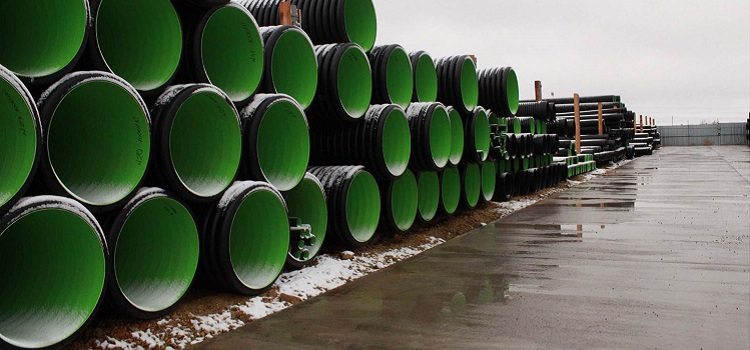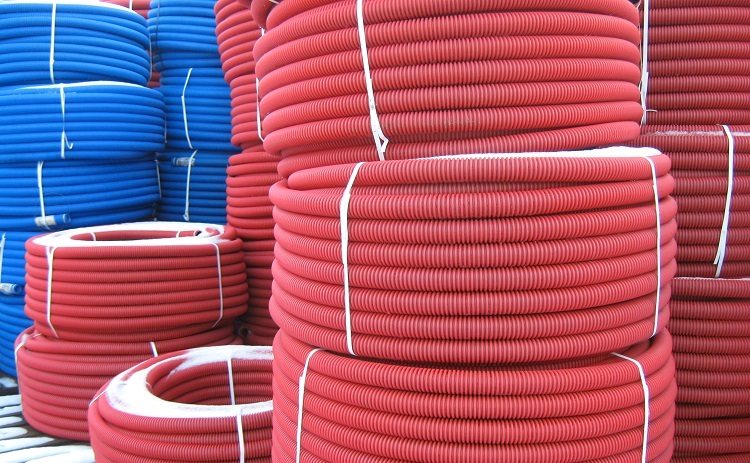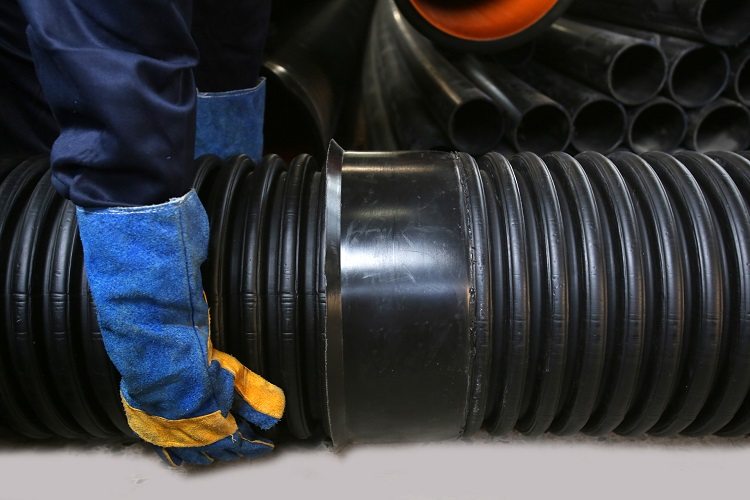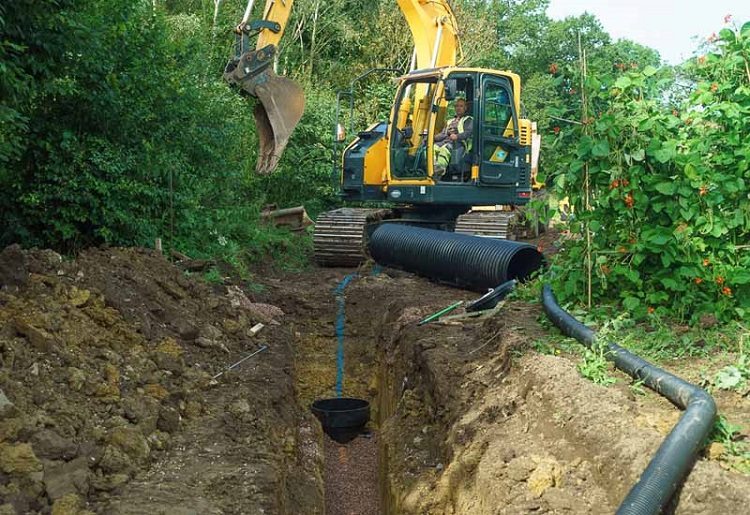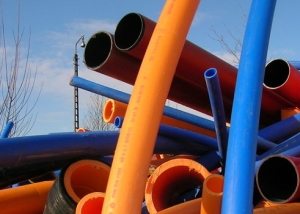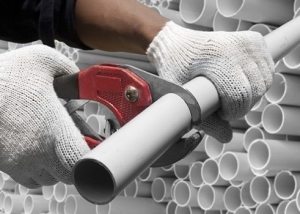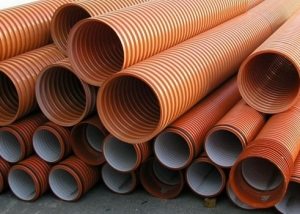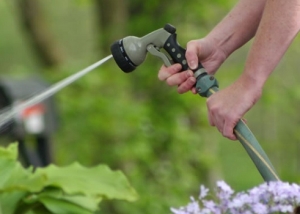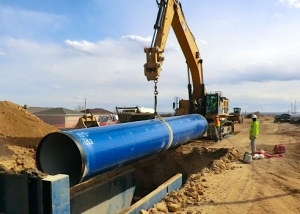High resistance of the corrugated pipe to mechanical stress caused the development of new technologies in this area. As a result, various modifications of products of this type appeared on the market. Two-layer corrugated pipes deserve special attention. As practice shows, they can be used not only to protect power and signal cables, but also as a reliable coating for water and gas communications.
Content
Types and features of corrugated pipes
The design of these products includes several layers. As raw materials for the manufacture of an external protective coating, low-pressure polyethylene (PNA) is used. This layer can be:
- of red color. A flexible pipeline of this color is used for laying high-voltage electric networks;
- of blue color. In such a corrugated two-layer pipe, communication and telecommunication cables are laid;
- black color. A corrugated pipe of this color is used in the installation of general-purpose networks.
Unlike the external, the inner layer is made of LDPE - high pressure polyethylene. The use of this material increases the rigidity of the ribs of the corrugation itself. The surface of the inner layer is smooth.
Double-walled corrugated pipe is of the following types:
- flexible electrical engineering. It is used for cable wiring. Characteristics of an electrical pipe allow you to create cable routes of any complexity on its basis;
- corrugated pipe is rigid. Such products, like the previous ones, are applicable for arranging cable routes laid in the ground or in reinforced concrete structures. However, the main scope of their application is the construction of cable ducts, mainly in urban areas. This is due to high strength. corrugated pipes and resistance to pressure;
- flexible drainage pipe. Products of this type are used for wastewater and hidden reclamation. Installation of drainage flexible double-walled corrugated pipes prevents the destruction of the foundations of buildings, sports facilities and highways with groundwater.
Helpful information! A distinctive feature of these products is the presence of a geofilter in the design. This technical solution eliminates siltation of the pipe cavity.
Speaking specifically about flexible double-walled electrotechnical plastic corrugated pipes, their feature is the presence / absence inside the cable (probe) for cable pulling.
Product Features and Benefits
One of the most amazing properties of a flexible double-walled corrugated pipe is the presence of the so-called mechanical memory. It is formed due to the simultaneous use of HDPE and LDPE materials, characterized by tear resistance and rigidity. When stretching or compression after removing the load, the corrugated pipe returns to its original state. This gives the product resistance to dynamic loads, and allows its use in regions with seismic activity.
Among other characteristics, it is necessary to highlight:
- profitability. The total cost of installing double-walled corrugated pipes with their subsequent operation is less than using smooth-walled HDPE or asbestos-cement pipes.
- ease of installation;
- long service life - about 50 years;
- wide range of operating temperatures. You can use double-walled corrugated pipes in regions with any climatic conditions. The exception is the permafrost zone;
- mechanical strength. These products can be mounted in a hidden way, since their advantageous property is resistance to dynamic and static load. Moreover, both to external and internal. This property allows the use of corrugated flexible double-walled pipes for laying power cables with a large cross section, armored cables, etc .;
- maintainability. The presence of a smooth inner surface facilitates not only the installation process, but also the replacement. It is possible to carry out repair work without opening the soil, it is enough to get access only to the problem place, and not to the entire emergency section.
Comparative characteristics
Modern technologies do not stand still, but are developing rapidly. Due to this, new thermoplastic polymers suitable for the manufacture of corrugated double-walled pipes.
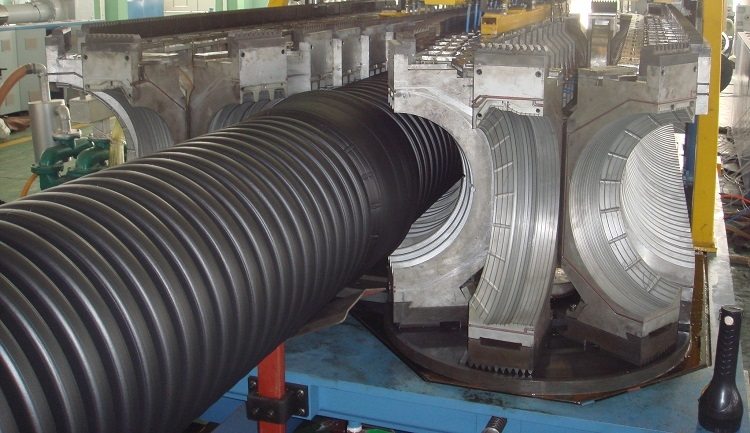
High technical characteristics of the pipes are due to the use of the most modern technologies for the production of these products
Helpful information! If in the segment of electrotechnical corrugated pipes there are no changes in the types of raw materials used (HDPE and LDPE is quite enough), then in sewage systems the problem of developing new materials is very relevant. Therefore manufacturers of flexible products began to use polyvinyl chloride (PVC) and polypropylene (PP).
Comparative characteristics of the polymers are presented in the table.
Table 1
| Material characteristic | Polyvinyl chloride | Polyethylene | Polypropylene |
| Lifetime | Over 50 years | Over 50 years | Over 50 years |
| Application system | Cold water supply, pressure / non-pressure sewage | Cold water supply; internal, external sewerage | Cold, hot water supply, storm sewer, heating systems; internal, external sewerage |
| Operating temperature range, ˚С | No more than +40 | No more than +40 | Up to +95. |
| Cold resistance, ˚С | To 10 | Up to -70 | |
| Relative linear expansion | 6x10-5 | 14x10-5 | 12x10-5 |
| Tensile strength MPa | 30-50 | 20-38 | 28-36 |
| UV exposure | Generally stable, with prolonged exposure, color loss | The product becomes brittle, increasing the aging rate | Loss of strength |
| Biological, chemical inertness | Steady | Only HDPE and LDPE fit | Steady |
| Density | 1,36 – 1,43 | 0,948 – 0,965 | 0,90 – 0,94 |
| Product Recycling | Allowed | Allowed | Allowed |
The range of products of this type manufactured by modern industry is clearly presented in table No. 2.
table 2
| Name | Amount of packaging, meters | Inner Diameter Millimeters | Outer diameter millimeters |
| Corrugated Pipe with Cable
|
15 | 50.60 | 63,0 |
| 15 | 39,60 | 50,0 | |
| 15 | 31,20 | 40.0 | |
| 25 | 24,30 | 32,0 | |
| 50 | 18,30 | 25,0 | |
| 100 | 14,10 | 20,0 | |
| 100 | 10,70 | 16,0 | |
| Corrugated pipe without cable
|
15 | 50,60 | 63,0 |
| 15 | 39,60 | 50,0 | |
| 15 | 31,20 | 40,0 | |
| 25 | 24,30 | 32,0 | |
| 50 | 18,30 | 25,0 | |
| 100 | 14,10 | 20,0 | |
| 100 | 10,70 | 16,0 |
Concealed installation of corrugated flexible double-walled pipes of sewage systems
This work is performed in the sequence described below. All rules should be followed strictly so that the system functions normally and lasts a long time.
Preparation of trenches. Earthwork is carried out in accordance with the requirements of SNiP 3.02.01- 87.
The basic rules are as follows:
- the distance between the wall of the laid pipe and the wall of the trench should be at least 20-25 cm;
- After digging a trench, carefully examine its bottom. If there are boulders there, remove them, and fill the excavations with soil and compact. Pay attention to the density of the soil. If it is very loose, strengthen the bottom by concreting;
- trench preparation should be carried out by observing the angle of inclination of the double-walled flexible pipe indicated in the design. This will ensure the normal operation of gravity sewage;
- regardless of the type of soil, place a “pillow” under the pipe. Use fine gravel (fractions up to 20 mm) or clean sand as a bedding layer. Sufficient thickness of this layer is 15 cm. It is not necessary to seal the “pillow” except for the installation site of the inspection well. This operation must be carried out at a distance of up to 2 meters from its wall.
When creating the central highways for the use of lifting traverse. When installing the pipeline in a private house, you can lay the pipe in the trench manually.
Advice! At the places of the pipe sockets, it is necessary to build pits, removing a little soil from the pillow.
Pipe connection. This process also has a specific order:
- Place the pipes along the side of the trench.
- 2. Remove dirt and dust from the socket and the smooth end of the pipes.
- Place the rubber o-ring in the groove of the socket and insert the pipe firmly.
- Lay the pipes in the trench so that the sockets are directed in the direction opposite to the slope.
Backfilling. To do this, first use sand. Its layer should be 8-10 centimeters above the upper surface of the pipes. On top of the sand, pour the soil removed when digging a ditch. Make sure that there are no boulders and lumps of frozen ground in it.
Corrugated flexible double-walled pipes are a practical material for the construction of sewer pipelines, drainage systems and stormwater. Reliability and durability, as well as ease of installation led to a high demand for these products.
